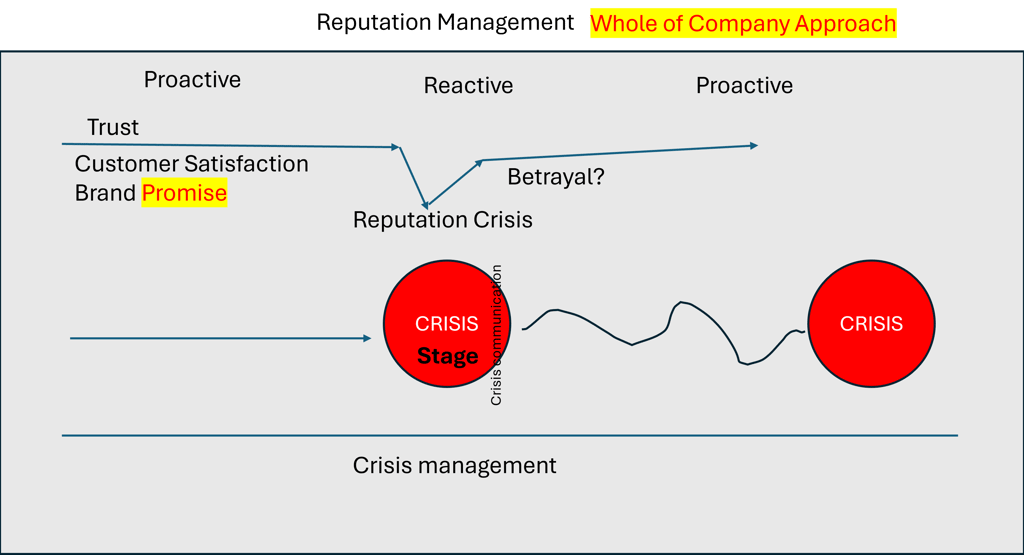marketing | consulting | tech
Your Step by Step Guide to Integrating Crisis Management, Communication, and Reputation Management
Crisis Communications in the Reputation Management Context is a Proactive as well as Reactive tool, requiring a Whole of Company Approach
Salman Abedin
9/8/20241 min read


“All the world’s a stage,
And all the men and women merely players"
As you Like it. Shakespeare
A good Crisis makes for good theater, there is no doubt! Nothing like a crisis to either destroy or build the reputation of a company. Daniel Deirmeier lays out five steps to Integrate Crisis Management, Communications and Reputation Management. Lets start with definitions:
Crisis Management: The process of handling a singular event that poses an immediate threat to a company’s operations, which could be operational, legal, or natural, and disrupts business continuity. It also includes managing the reputational dimension of a crisis.
Crisis Communication: A crucial subset of handling crises, focusing on communication strategies during a crisis.
Reputation Management: The practice of maintaining trust with vital stakeholders such as customers and suppliers. It requires a proactive approach, involving the identification of potential risks and integrating them into everyday business processes to maintain a strong trust foundation.
Step 1: Break Down Silos
Encourage collaboration between departments responsible for crisis, communication, and reputation strategies.
Facilitate cross-training and regular interaction between teams to develop a unified approach.
Step 2: Develop Enterprise-Level Reputation Management
Move beyond appointing a single reputation officer; integrate reputation management as an enterprise capability.
Embed this focus into corporate processes, akin to Toyota’s total quality management system.
Step 3: Focus on Trust Metrics
After a crisis, evaluate success by measuring changes in stakeholders' trust levels.
This requires for Trust Metrics to be measured before, during and after the crisis. Other brand love & customer satisfaction metrics can also come into play here.
Step 4: Proactively Identify Risks
Integrate risk management into regular business processes.
Equip teams with tools and processes to predict and mitigate potential risks ahead of time.
Step 5: Cultivate a Trust-Driven Culture
Instill values of transparency and trust throughout the organization.
Ensure leadership models these values, promoting them as essential components of day-to-day operations and crisis management.
By taking a whole of company approach, companies can be prepared to handle the crisis when it comes. Talk to tbmt for advice on preparing for a crisis.
tbmt
Strategy Consulting | Brand Marketing | Technology Transformation
Connect
subscribe for interesting branding content
© 2024. All rights reserved.
